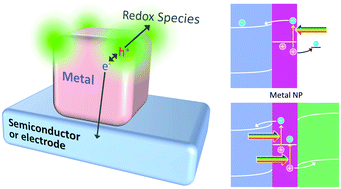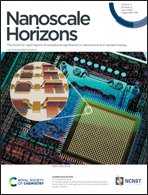Plasmonic hole ejection involved in plasmon-induced charge separation
Abstract
Since the finding of plasmon-induced charge separation (PICS) at the interface between a plasmonic metal nanoparticle and a semiconductor, which has been applied to photovoltaics including photodetectors, photocatalysis including water splitting, sensors and data storage in the visible/near-infrared ranges, injection of hot electrons (energetic electrons) into semiconductors has attracted attention almost exclusively. However, it has recently been found that behaviours of holes are also important. In this review, studies on the hot hole ejection from plasmonic nanoparticles are described comprehensively. Hole ejection from plasmonic nanoparticles on electron transport materials including n-type semiconductors allows oxidation reactions to take place at more positive potentials than those involved in a charge accumulation mechanism. Site-selective oxidation is also one of the characteristics of the hole ejection and is applied to photoinduced nanofabrication beyond the diffraction limit. Hole injection into hole transport materials including p-type semiconductors (HTMs) in solid-state cells, hole ejection through a HTM for stabilization of holes, hole ejection to a HTM for efficient hot electron ejection, voltage up-conversion by the use of hot carriers and electrochemically assisted hole ejection are also described.

- This article is part of the themed collections: Horizons Community Board Collection: Solar Energy Conversion and Nanoscale Horizons 2021 Lunar New Year Collection


 Please wait while we load your content...
Please wait while we load your content...